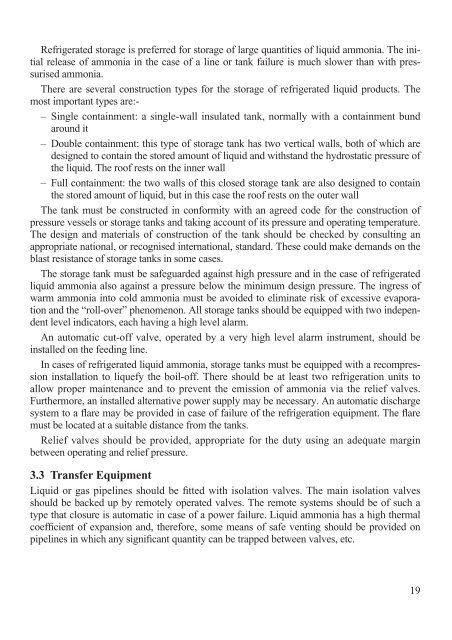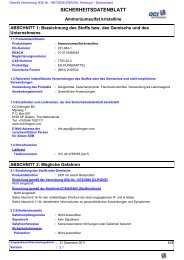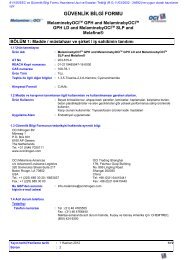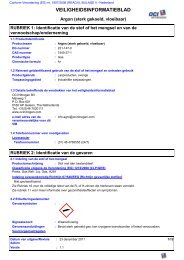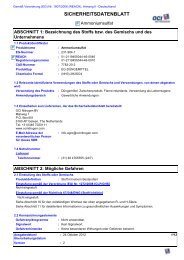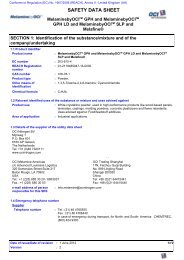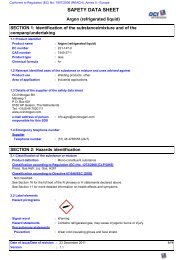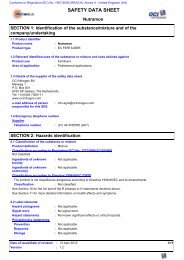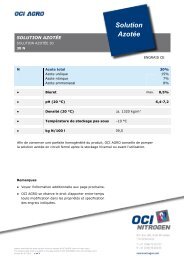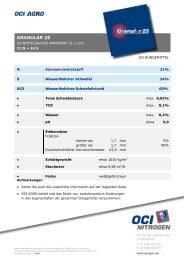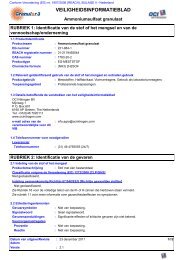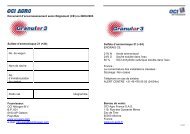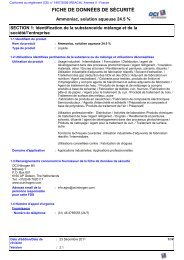PRODUCTION OF AMMONIA - OCI Nitrogen
PRODUCTION OF AMMONIA - OCI Nitrogen
PRODUCTION OF AMMONIA - OCI Nitrogen
Create successful ePaper yourself
Turn your PDF publications into a flip-book with our unique Google optimized e-Paper software.
Refrigerated storage is preferred for storage of large quantities of liquid ammonia. The initial<br />
release of ammonia in the case of a line or tank failure is much slower than with pressurised<br />
ammonia.<br />
There are several construction types for the storage of refrigerated liquid products. The<br />
most important types are:-<br />
– Single containment: a single-wall insulated tank, normally with a containment bund<br />
around it<br />
– Double containment: this type of storage tank has two vertical walls, both of which are<br />
designed to contain the stored amount of liquid and withstand the hydrostatic pressure of<br />
the liquid. The roof rests on the inner wall<br />
– Full containment: the two walls of this closed storage tank are also designed to contain<br />
the stored amount of liquid, but in this case the roof rests on the outer wall<br />
The tank must be constructed in conformity with an agreed code for the construction of<br />
pressure vessels or storage tanks and taking account of its pressure and operating temperature.<br />
The design and materials of construction of the tank should be checked by consulting an<br />
appropriate national, or recognised international, standard. These could make demands on the<br />
blast resistance of storage tanks in some cases.<br />
The storage tank must be safeguarded against high pressure and in the case of refrigerated<br />
liquid ammonia also against a pressure below the minimum design pressure. The ingress of<br />
warm ammonia into cold ammonia must be avoided to eliminate risk of excessive evaporation<br />
and the “roll-over” phenomenon. All storage tanks should be equipped with two independent<br />
level indicators, each having a high level alarm.<br />
An automatic cut-off valve, operated by a very high level alarm instrument, should be<br />
installed on the feeding line.<br />
In cases of refrigerated liquid ammonia, storage tanks must be equipped with a recompression<br />
installation to liquefy the boil-off. There should be at least two refrigeration units to<br />
allow proper maintenance and to prevent the emission of ammonia via the relief valves.<br />
Furthermore, an installed alternative power supply may be necessary. An automatic discharge<br />
system to a flare may be provided in case of failure of the refrigeration equipment. The flare<br />
must be located at a suitable distance from the tanks.<br />
Relief valves should be provided, appropriate for the duty using an adequate margin<br />
between operating and relief pressure.<br />
3.3 Transfer Equipment<br />
Liquid or gas pipelines should be fitted with isolation valves. The main isolation valves<br />
should be backed up by remotely operated valves. The remote systems should be of such a<br />
type that closure is automatic in case of a power failure. Liquid ammonia has a high thermal<br />
coefficient of expansion and, therefore, some means of safe venting should be provided on<br />
pipelines in which any significant quantity can be trapped between valves, etc.<br />
19


